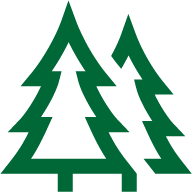
Tree Care Basics: A Starter Guide
5 Things To Know Before Your Tree Removal
Johnni Knight
Removing a tree isn't usually a decision that is undertaken lightly. There are a few questions that must be answered and considerations that must be made before you can begin the process of removing a dangerous or unwanted tree.
1. Who is responsible for the removal?
Responsibility for the tree will depend upon the local rules governing such things. In some areas, a tree becomes your responsibility if it falls onto your property, even if it wasn't originally growing there. In other locales, the responsibility may rest with the landowner of the tree's original location. If the tree isn't on your property and it hasn't fallen, but it poses a danger to your property, you may be able to follow legal channels to force the property owner to cover removal.
2. What regulations impact removal?
Regulations and permits are a highly localized concern. The city may have permit requirements, for example, for trees over certain heights or for those growing in specific locations. There are also homeowner associations to consider, as they may require that you get permission before any type of tree removal. Your tree service can likely help you secure permits and meet any necessary regulations.
3. Is the tree posing any immediate danger?
Some situations pose an immediate threat, which means removal can't be delayed. If the tree has already fallen and is blocking pathways or resting on a structure, then prompt removal is needed. Trees that are leaning or hung up on powerlines or neighboring trees also pose a very dangerous hazard. Don't delay if there are any hazard concerns with the tree.
4. Are there extraordinary safety concerns?
Examples of extraordinary safety concerns include trees growing near power lines, those that overhang buildings, and trees, and very tall trees. These are examples of situations where the homeowner should not attempt to remove the tree on their own. Instead, call a tree removal service that offers the skilled technicians needed to address the specific safety concern.
5. How will the debris be handled?
Debris includes the limbs and twigs, the trunk, and the stump remains. Depending on the level of service you pay for, the cleanup may be full, partial, or your responsibility. Full cleanup means all debris, including the stump, will be chipped and ground out for removal. You may request to keep the wood chips for use in the landscaping if desired. Partial removal usually means the branches and trunk are taken care of, but a separate service is needed for stump removal.
Contact a tree removal service to learn more.
Share

Proper tree care is an essential part of maintaining your property's appearance and overall well-being. After all, neglected trees can quickly become safety hazards if limbs should fall and damage your property. That's why it's important that you know how to take care of your trees. Luckily, this site is here to help. With the information on this site, you'll be able to better understand the different needs of each type of tree on your land. That way, you can tailor your tree care accordingly and you'll know when you should call a tree service for more help and ongoing care.
-
Why You Should Hire a Tree Company for Your Property 17 July 2024